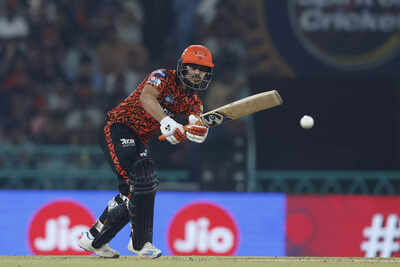Ihsanullah last played for Pakistan on his ODI debut in April 2023 and was initially sidelined with an elbow injury which the PCB medical department, led by Dr Sohail Saleem, did not fully appreciate the gravity of. That game also remains his last at the competitive level.
He strongly disputes that there was mismanagement on the part of the PCB in their treatment of Ihsanullah. “There was no mishandling in this case,” Dr Saleem tells ESPNcricinfo. “I’ll admit there was a delay [in the initial diagnosis]but no mishandling.”
That delay, though, is the focus of much scrutiny. Speaking to ESPNcricinfo, Sultans owner Ali Tareen said that the PCB’s medical department could not pick up an elbow fracture in the scans they conducted, and subsequently went about straightening his elbow. Ihsanullah went on to a training regimen that included gym work and regular bowling despite no confirmation that a more serious injury had been decisively ruled out.
A later scan after repeated complaints of pain revealed a fracture, significantly exacerbated by the stress of the workload he had been put through. Mainstream medical consensus suggests this could have even been career-threatening, or at the very least permanently hindered his ability to remain the high-speed pace bowler he shot to fame with.
Dr Saleem says he suspected Ihsanullah’s injury was worse than it initially appeared. “I said I wanted to get fresh tests conducted because I suspected it was more than just workload syndrome. It was diagnosed as such by the doctor who was previously here at the PCB, and not my team. A lab that gave us an MRI scan gave us an incorrect prognosis. I ordered the same scan again, and we picked the fracture up.”
He claims it was his suspicion after Ihansullah complained of pain when he bowled on the very first day. A surgeon was brought to Pakistan on the advice of Dr Saleem, but despite the surgery, Ihsanullah’s ability to straighten his elbow remained significantly inhibited.
Dr Saleem says the pain he complained about was a kind of routine “post-surgical pain that everyone feels”. “The recovery period of an injury this serious isn’t three months, it’s much longer.”
There were also signs of a fraying relationship between the bowler and the PCB in this period. Dr Saleem said Ihsanullah asked to leave the accommodation at the National Cricket Academy provided by the PCB of his own accord. He also said the player would often opt for massage therapy unauthorised by the PCB, further hindering his development.
“We have worked on Ihsanullah a lot,” contests Dr Saleem. “We spent a lot of money on Ihsanullah, and have now arranged for his visa to the UK. But he wanted the shortest possible time span to full fitness. Our rehab is based on recovery-related criteria independent of time.”
According to Tareen, when Dr Javed Mughal, a physiotherapist who works in the UK and is now a consultant with the PCB, was brought in for a second opinion, it was discovered there was a separate injury concern with Ihsanullah’s bowling shoulder that had also gone undiagnosed. Tareen told ESPNcricinfo that he believes Ihsanullah will likely require further surgery. Should it happen, it will take place in the UK, with the PCB footing the bill.
Tareen took to Twitter earlier this week to reveal it was Sultans and not the PCB who bore the brunt of his living expenses while he recovered, saying they would also arrange for Ihsanullah to travel to England later this month “to be assessed by a world-renowned surgeon”. The current PCB chairman, who was not in situ for the best part of Ihsanullah’s lengthy injury layoff, spoke to Tareen following those comments, reportedly expressing dissatisfaction at the bowler’s treatment. It is now believed the PCB will pick up the tab and logistical arrangements for Ihsanullah’s recovery.
That yet another Pakistan fast bowler’s medical treatment left a lot to be desired will invariably raise further uncomfortable questions for a cricket board that has come under intense scrutiny for bungling fast bowlers’ medical treatments. A number of players, and coaching and management staff, have privately expressed to ESPNcricinfo that there is a trust deficit between several players and Dr Saleem, something that is only likely to be thrown into sharper relief now.
Dr Saleem wasn’t around when Shaheen had his injury lay-off, but defends the PCB’s medical management fiercely, citing the constraints and budgets they work under compared to sports medicine specialists abroad.
“The people advising me from the UK, I advise them to come here and work within the environment. I invite them to work here in these conditions. There has never been a time when we haven’t done our best for any player. If UK sports science was that special, Ben Stokes [who pulled out of the T20 World Cup] would have gone to the World Cup.”
However, there is a reason Pakistan supporters tend to fear the worst when a fast bowler ends up injured, and that loss of confidence will only deepen when situations like Ihsanullah’s exist. The best defence of any sporting medical department comes in the form of wider player availability, quicker recovery times, and fewer injuries. And, as Ihsanullah’s case illustrates, there is significant room for improvement.
Danyal Rasool is ESPNcricinfo’s Pakistan correspondent. @Danny61000







